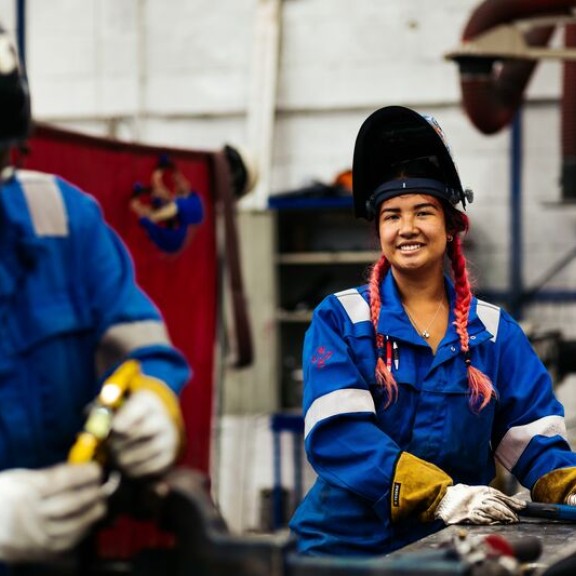
Port less dependent on fossil cargo in 2021
In the year 2021, the Port of Amsterdam was again confronted with the consequences of the energy transition and the Covid pandemic. Transshipment fell, but results increased. The total turnover of non-fossil cargo increased, and therefore the port became less dependent on fossil cargo.
Key results
Turnover grew by 3% to €163.1 million in 2021 compared with the previous year (€158.4 million). The collected harbour dues for 2021 amounted to €53 million, a slight decrease compared to 2021 (over €54 million). The inland harbour dues rose to over €7 million compared to almost €6.5 million for 2021. Finally, revenues from leases amounted to over €97 million compared to €92 million in the previous year. The profit in 2021 was €52.9 million compared with €51.7 million the year before. Although turnover is not yet at the level it was before the Covid pandemic, the annual figures offer good prospects for the coming years.
Transshipment
Total transshipment in the port area in 2021 was slightly lower than expected at 71.3 million tonnes compared to 74.3 million tonnes in 2020. Transshipment in oil products fell by 13% to 35.7 million tonnes. This reduced demand for fuels is partly the result of the energy transition. The Covid crisis also affected the figures. In contrast, the transshipment of coal increased by 41% in 2021 to 10.4 million tonnes, due to the high price of gas. This increase does not change the objective of becoming a coal-free port by 2030. Non-fossil sales also increased. For example, container transshipment increased by 25%. Because the added value of the port is not just in the transshipment figures, it was decided to publish these together with the annual results in future.
Land allocation
The port is facing a lack of space, both physical and environmental, for industry. We are therefore critical of land allocation. We are examining more thoroughly than before to what extent the establishment of a potential customer fits into our strategy and whether such an establishment would contribute to the existing ecosystem of companies in our port. If not, the establishment will not go ahead. In 2021, 18.9 hectares were allocated.
Milestones
Several milestones were reached in 2021. Important developments in the past year included various partnerships such as the Hydrogen Hub Amsterdam NZKG. The participating organisations in the North Sea Canal Area want to accelerate the transition to the hydrogen economy, for example by constructing an international hydrogen backbone.
At the beginning of January, Samskip opened a container line service to Ireland, further expanding the intermodal shortsea network from Amsterdam. Companies Vollers and Commodity Center Netherlands opened warehouses in the port, especially for the storage and transhipment of cocoa, and Overslag Bedrijf Amsterdam (OBA) took over stevedoring company IGMA Bulk Terminal. This acquisition enables OBA to switch more quickly to cargo types other than coal, including agribulk.
In June, it became clear that Gidara Energy is going to establish a biofuel plant in our port. The plant will convert previously non-recyclable waste into renewable methanol.
In September, King Willem-Alexander opened the first Dutch bioLNG plant. Renewi collects organic material and converts it into biogas. Nordsol then processes the biogas into bioLNG, which Shell then supplies to its customers through LNG filling stations.
Joining forces
‘Taking the lead’ is the title of the strategy pursued by the port authority until 2025. 2021 was the first year of the new strategy. The first results can be found here. In order to take the lead, we are working more and more intensively with the city and the region. The port plays a crucial role in solving complex issues in the Amsterdam Metropolitan Area such as electricity congestion. Due to the acceleration of the energy transition and the associated demand for electricity, the port area has become congested faster than expected. As a result, we may not be able to connect new companies to the electricity grid. Together with the City of Amsterdam, Liander and TenneT, we are investigating how we can contribute to short-term and long-term solutions.
Outlook
In the coming years, the Port of Amsterdam will continue to work on implementing the Strategic Plan 2021-2025. It focuses on the further development of a sustainable port. Of concern is the unexpected and dramatic escalation of the Ukraine crisis, more than a month before publication of the annual report. The exact impact on the port for 2022 cannot be stated, but it is disproportionate to the humanitarian crisis that has arisen. For the time being, the Port of Amsterdam does not expect any major changes to the transshipment figures and the related turnover.